Final year project
Beautifully Damaged [Read more]
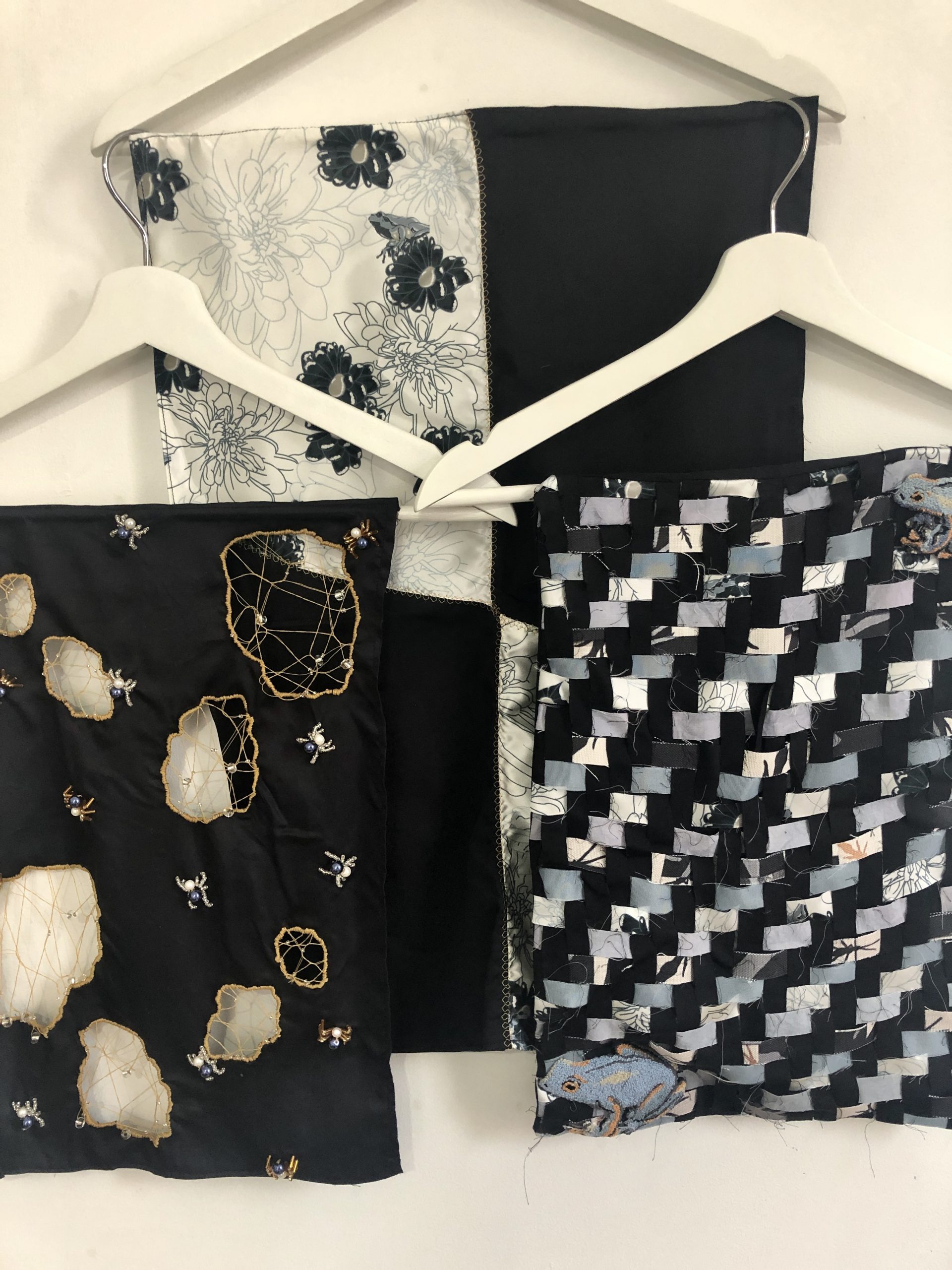
Beautifully Damaged Overview
Throughout my collection, I have used three main principles, mending, patchwork and weaving. Varying these techniques, I have been able to combine the old and the new to create a couture fashion collection that is sustainable and timeless. Looking at combining the old with the new, and using gold to stitch together and fix it up, the collection embraced the old and the fraying and makes it the centre focus in a new and exciting way.
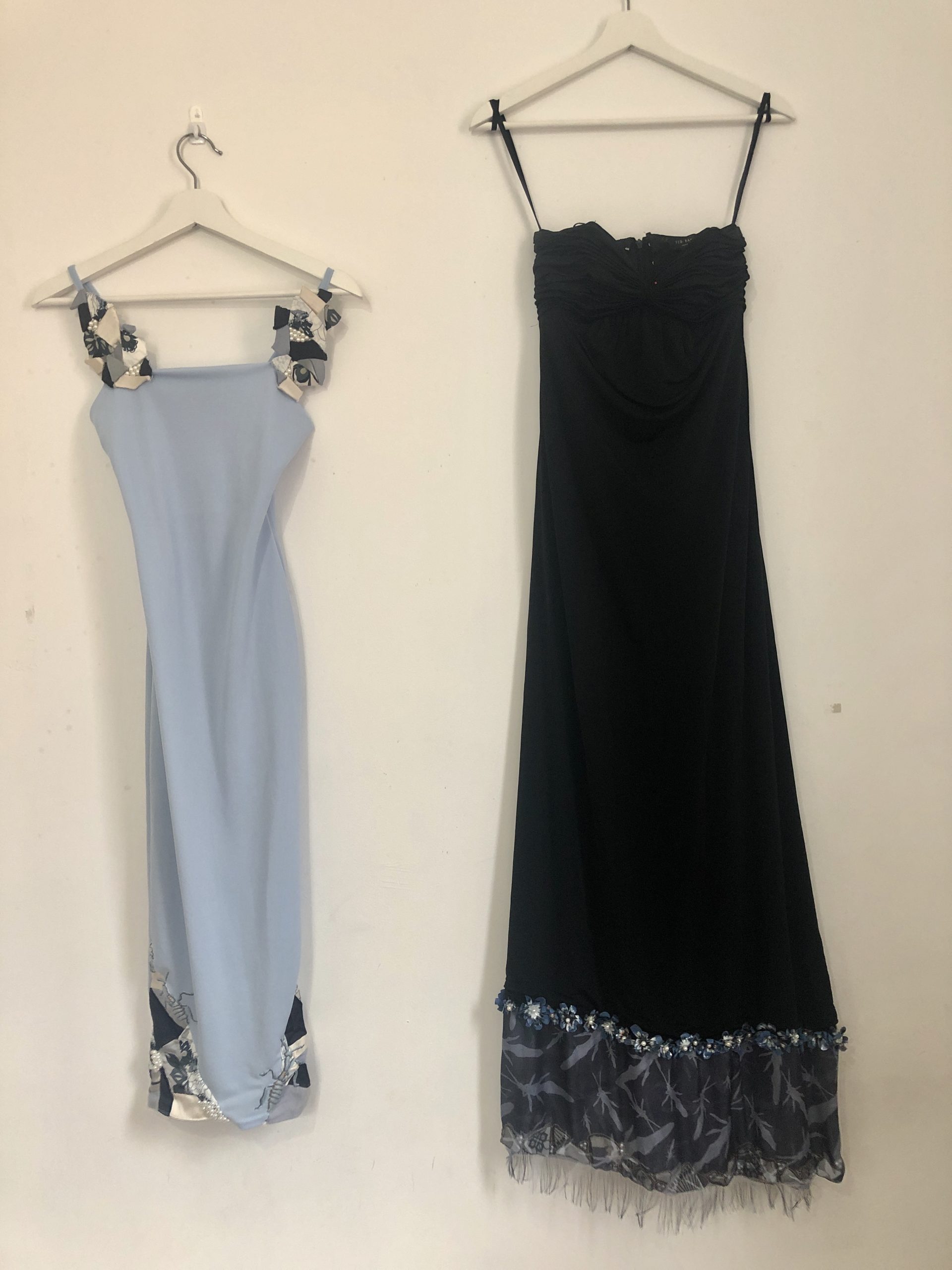

Fix Them Up
These two garments were sourced, ready to be thrown away by the owners from their damaged parts, and mended to create something and exciting. The designing process was based around the damaged parts, carefully considering how they could best be fixed, and presenting the Taxa to show their beauty in the mending process.
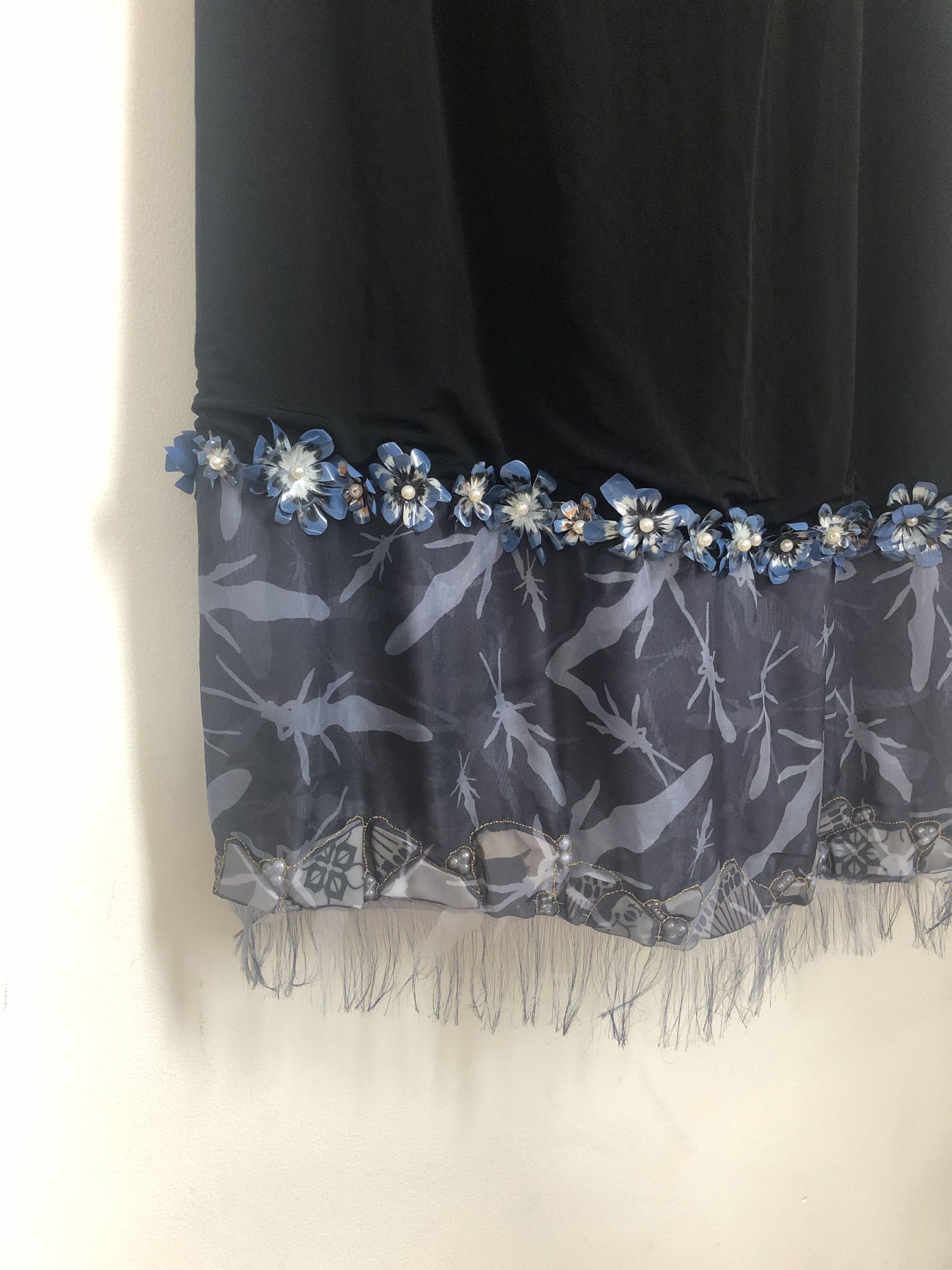

Damaged Trim
The bottom of this dress was completely ruined after a night out, ready to be discarded. The flower motifs were made from plastic bottles that were thrown away, painted and shaped to bring new life. Smashed ceramics are trapped in the fabric, embracing the Kintsugi theme with the gold stitching. Adding the frayed edge to pay tribute to the originally damaged edge, but now seen as beautiful rather than disposable.
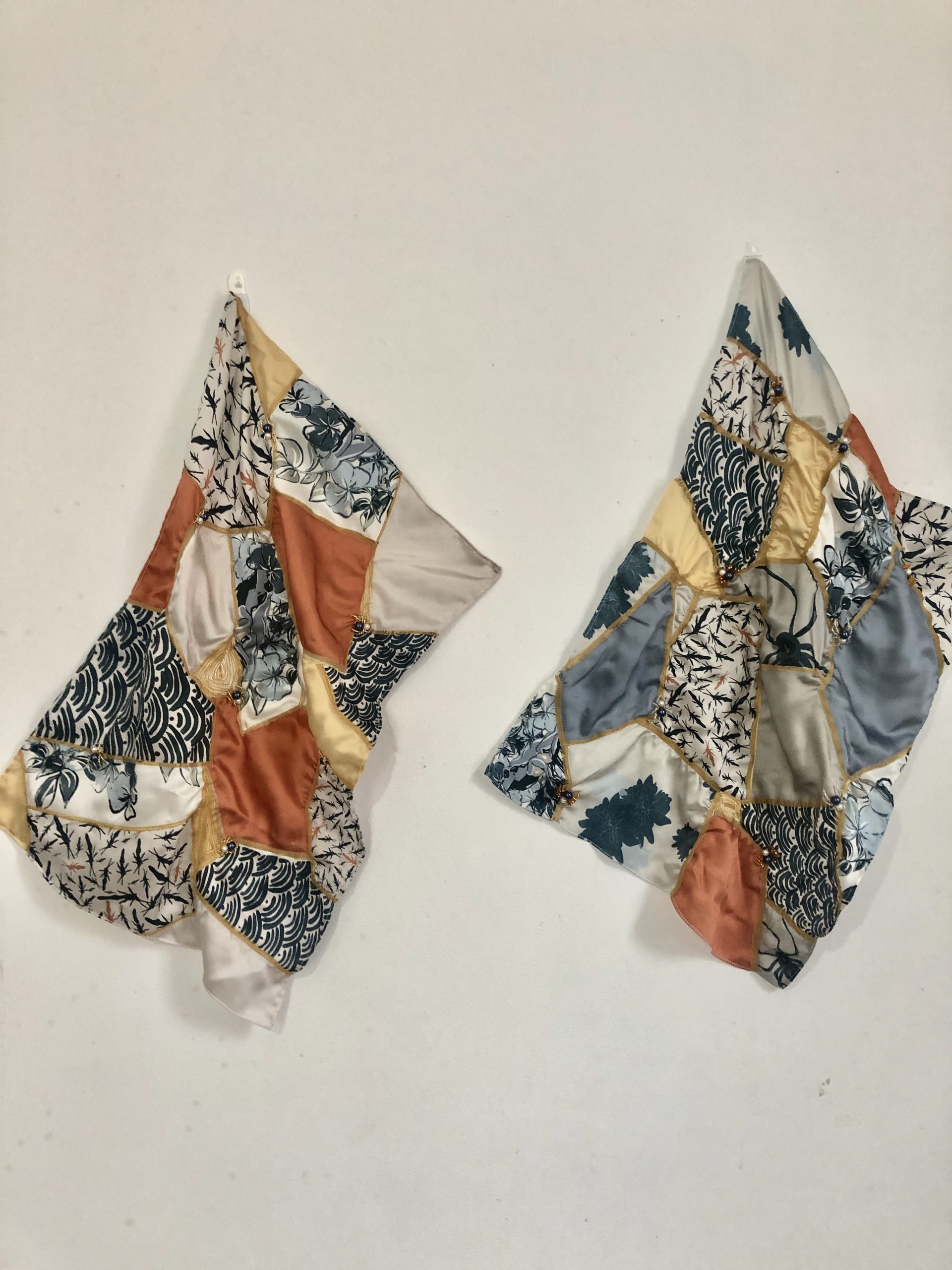

Printed Kintsugi
Twin pieces made up of various digital designs created throughout this project so that they may not be left behind in the development stage, but upcycled into two new designs to refresh and support the collection on pure silk fabric, stitched into with gold thread and beaded spiders, webbing together the various designs into their own unique piece
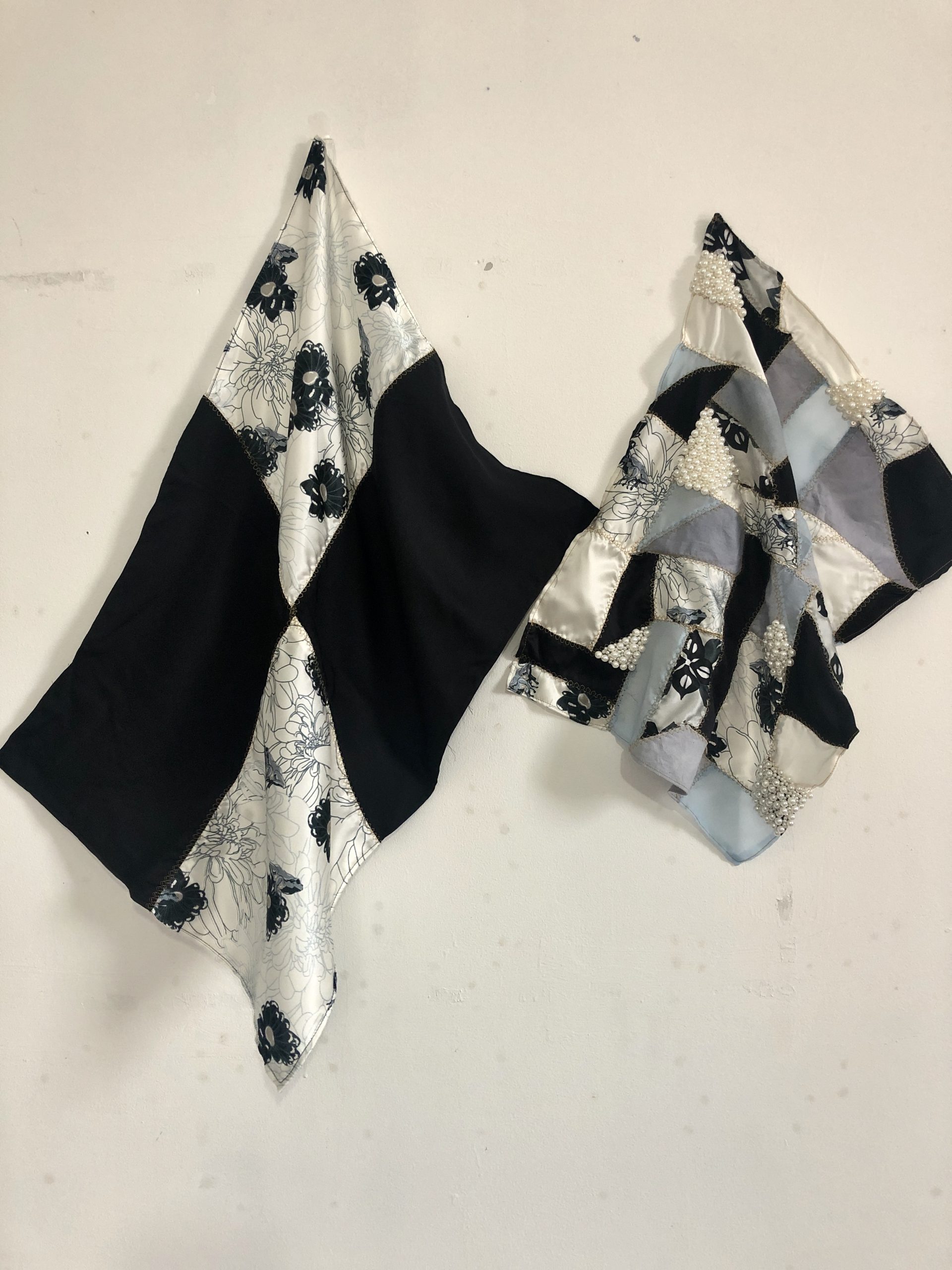

Patchwork Print
Made up from leftover fabric from previous projects, a multitude of scraps were stitched together, using offcuts of my own prints, and linen dyed from cabbage, to ensure a circular collection with zero wastage. Beading was added to fill the spaces the scraps couldn't, and brought together with fine gold stitching to show the beauty in the joining of random but complimentary fabrics.
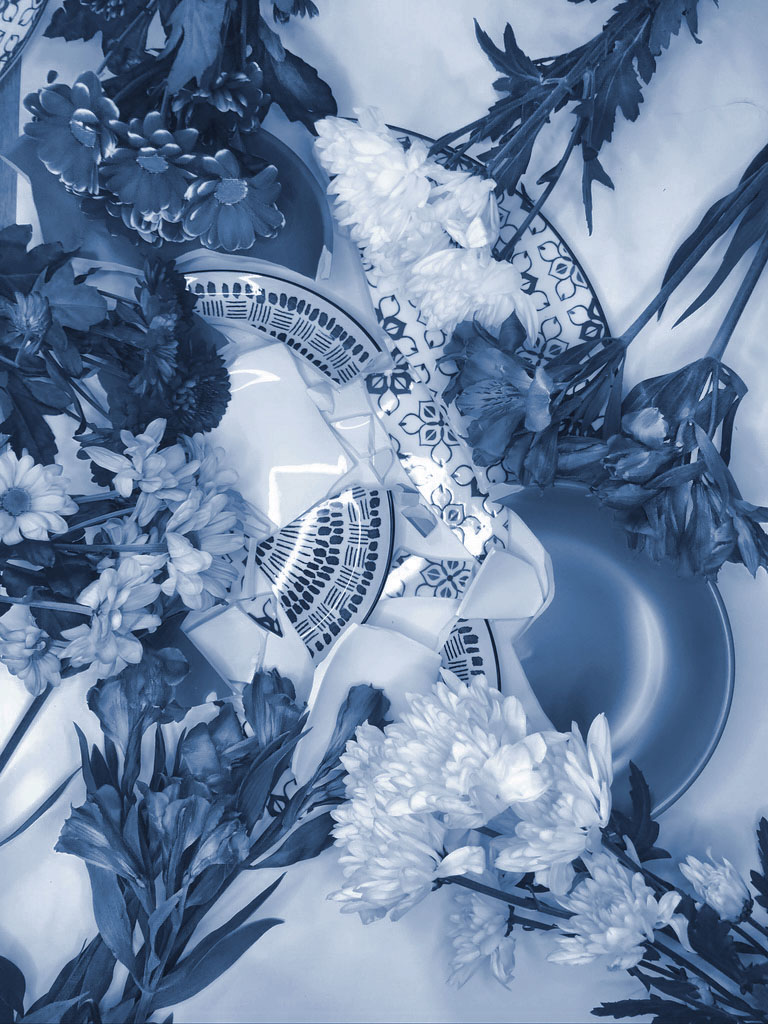

Initial Photography
Through photography, I explored the concept of fixing broken ceramics into something new, creating new pattern and designs, and adding flowers to soften the harsh damages. Through exploring colour pallets, this earthy tonal blue shone through, as a timeless colour wave that will complement all aspects of the project, from the creatures to the ceramics.
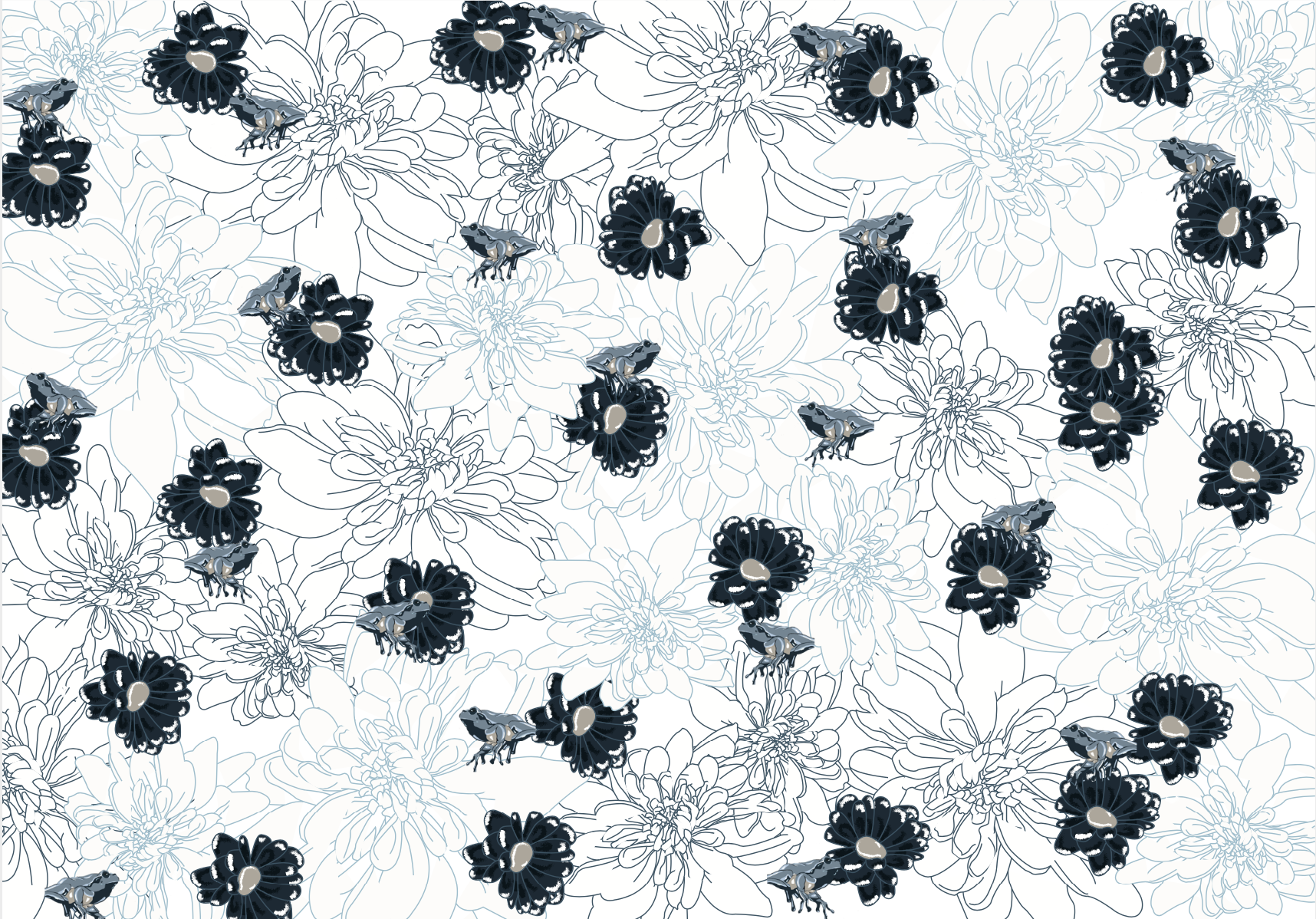

Flower Frog Print
This digital drawing looked at incorporating Taxa into a print, to embrace and emphasise its natural beauty in a calming and refreshing way. Having a clean and lighter print would work well when mixing with the damaged and fraying fabrics, to elevate and refresh the pieces, and bring lightness to the darker parts.
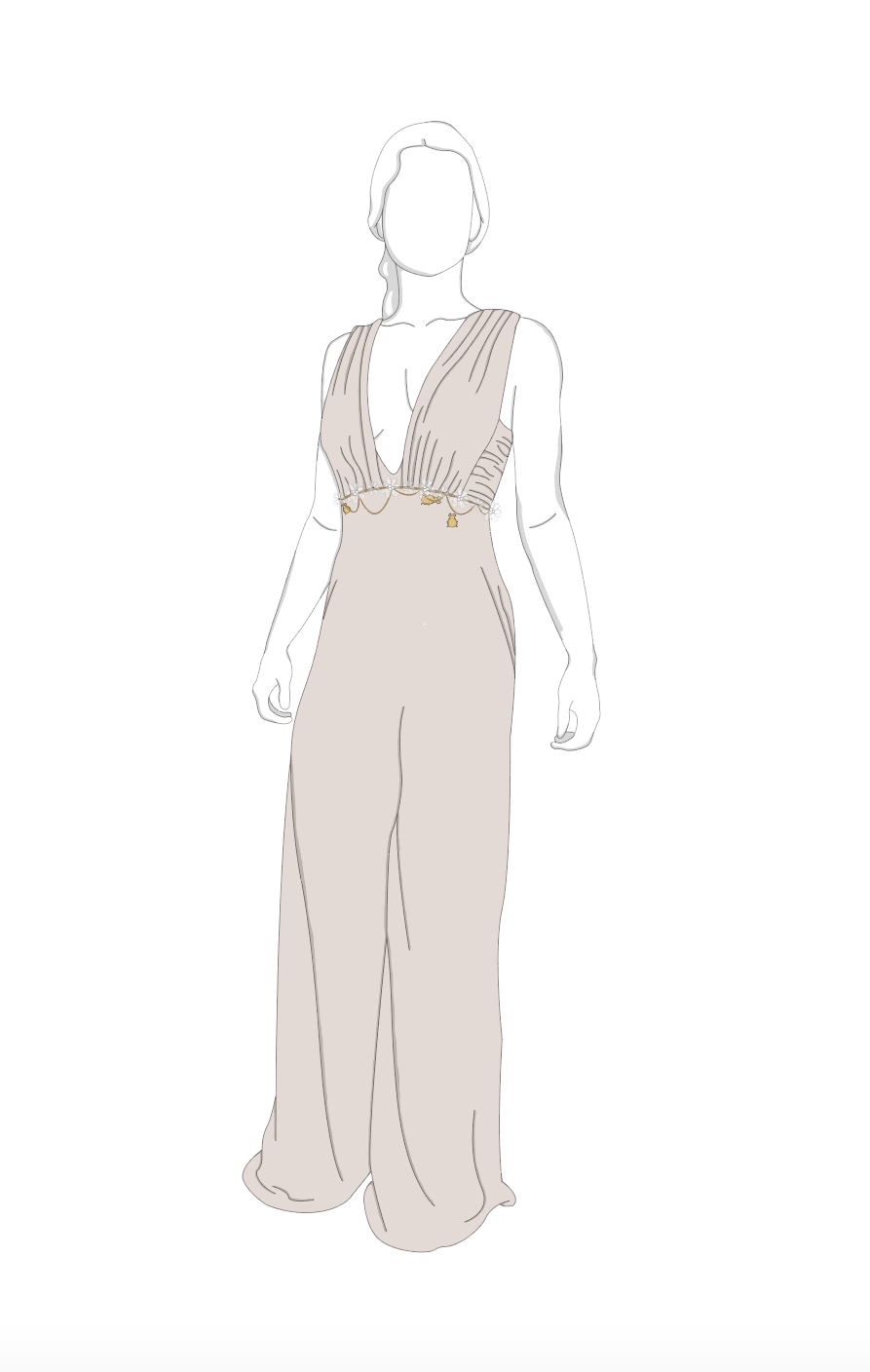

Jumpsuit Visualisation
One sourced garment was this jumpsuit with holes around the waist. As part of the planning process, it was important to first see how to fix the damaged parts using a darning technique, that could then be turned into one of the Taxa and then building up the design around using plastic flowers and gold chain. As seen here on the model, it was important to make the new design the focal point, to embrace the damage as a featured part of the design rather than hide, and see the exciting opportunities of up-cycling.
Eilidh Cottee
Reusing and up cycling the damaged into couture fashion
Sustainability is a vital route for the fashion and textiles industry in today’s climate and is the main basis for this project. Focusing on circular fashion, I worked on upcycling damaged garments, using scrap materials, organic fabrics, and hand processes to give new life, whilst embracing the damaged parts. Looking at the Japanese art of Kintsugi, where smashed ceramics are fixed with gold, I took great inspiration from the highlighting of the damaged parts. I also looked at the Forgotten Taxa, insects and amphibians that are fewer valued and under-researched, but vital to our echo system. Together, these two ideas will work together to fix and mend damaged garments, to embrace their past and make them beautiful again, highlighting the importance of preservation.
Using delicate hand processes of embroidery, darning, beading, and dying, each piece has been handcrafted to put the broken pieces back together, showing the beauty of combining and elevating scrap fabrics stitched together. Refreshed with my own digital designs on organic silks, the collection is timeless, and intended to last more than a season. With the use of an earthy blue and neutral colour pallet. This project represents the industry I wish to enter, encouraging sustainable fashion and hand-crafted pieces.
Final year project
Beautifully Damaged
Work Experience
I completed a three-month internship at Amanda Kelly, a print studio that caters to the fast fashion and commercial industry. As an intern, our role was to cut up the designs printed on the fabric each week, overlock them, photograph and log their code and picture into the system. Observing the designers producing 25 designs per week, I gained an understanding and ability to keep up with the high paced working environment and gained confidence in quick decision-making. As I was one of the longest staying there, I was trusted with computer duty, where I dealt with emails, picked out designs for clients and went to sales meetings. From my time there I learnt a lot in terms of organisation and handing out roles, often with sorting out designs and allocating roles to different people to get the workload completed in a week, prioritising, and keeping the studio need and organised. Being put in charge of emails for a while I was able to organise them myself, keeping an eye on exchanges and remembering each client. I was able to quickly familiarise myself with their system that when problems arose, I could fix it, such as when one of the sellers forgot to write the design code onto the selling form, I was able to locate it on the system, find the code and correct it for them. Upon returning to University, I felt more confident in incorporating print designs into my work has seen so many variations, their use of colour and scale, and thinking about how these can be used in industry. Overall, it has taught me much about being in charge of a team, organisation, and how to function in a fast-paced environment.
I spent three months at Suzie Turner Couture, a bespoke company that functions fully in house, and creates one off pieces for high end clients. Working among the other artisans, it was a hand on experience where I would be put in charge of development, decision making and creating sections of the garment using high end materials. The pressure from this meant I had to use all the skills I had and learn new ones quickly and efficiently and has resulted in my hand stitching and embroidery being my most attributed skill. I had the opportunity to observe professional fittings, and assist in pattern drafting, gaining valuable knowledge that can be used when entering the industry. During my time I was made studio manager, where I was in charge of ensuring everyone knew what they were doing, had set goals for the day, and overseeing all garments were put away safely at the end of the day. This was especially important when Suzie herself wasn’t in the studio, to ensure it continued to run smoothly in her absence. During my time I encountered many fast-approaching deadlines, where I had the opportunity to stay late, enjoying the comradery with the other artisans in our passion to complete the project. Being put in a managerial position in a high pressured and intense environment let to me being able to cope great under pressure, support a team and problem solve during serious time pressures.
Spending 10 weeks at Jenny Packham was a highlight of my placement year, solidifying the industry I wish to enter of couture garments. It gave me an insight into how a larger couture company can function. During my time there was when COVID-19 started and was a major learning experience in seeing how they reacted and adapted to a new and unpredictable situation, observing how they seamlessly transitioned to sourcing fabric and components locally, whilst still ensuring their garments were to the highest quality. I was based in the beading and design development department, learning how to make beading and sequin maps for designs, enhancing my illustrator skills, and developing problem-solving skills to ensure the sizing’s of the beads all fit together neatly. On occasions of downtime, I would take initiative to improve my designs and create concepts that were later used in designs that are now on sale. In addition, I would also help in the production department, enhancing my sewing skills, and fixing damaged or faulty garments. The placement left me with the confidence to take my own initiative, great illustrator skills and an aim for my future career.